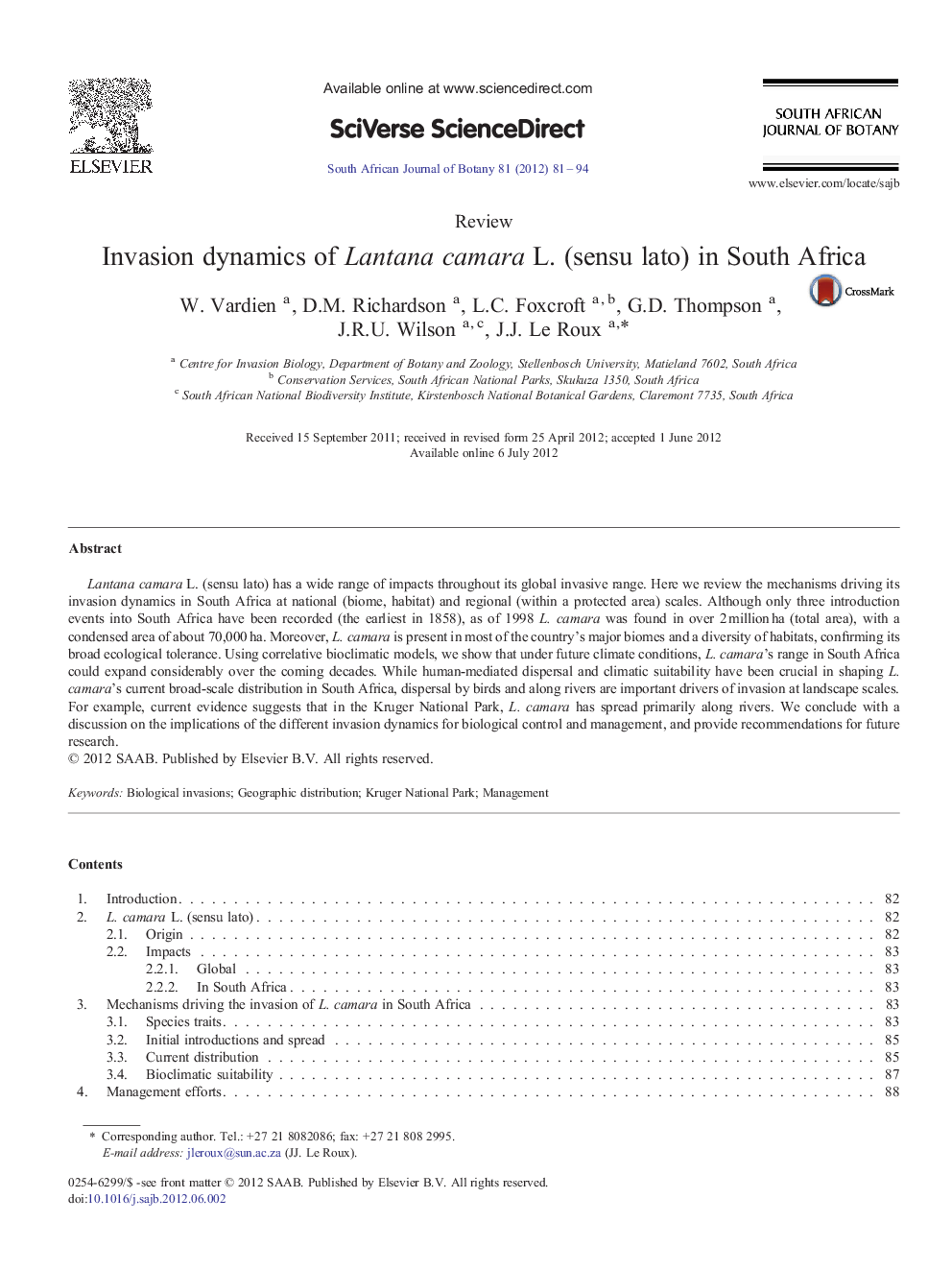| Article ID | Journal | Published Year | Pages | File Type |
|---|---|---|---|---|
| 4520999 | South African Journal of Botany | 2012 | 14 Pages |
Lantana camara L. (sensu lato) has a wide range of impacts throughout its global invasive range. Here we review the mechanisms driving its invasion dynamics in South Africa at national (biome, habitat) and regional (within a protected area) scales. Although only three introduction events into South Africa have been recorded (the earliest in 1858), as of 1998 L. camara was found in over 2 million ha (total area), with a condensed area of about 70,000 ha. Moreover, L. camara is present in most of the country's major biomes and a diversity of habitats, confirming its broad ecological tolerance. Using correlative bioclimatic models, we show that under future climate conditions, L. camara's range in South Africa could expand considerably over the coming decades. While human-mediated dispersal and climatic suitability have been crucial in shaping L. camara's current broad-scale distribution in South Africa, dispersal by birds and along rivers are important drivers of invasion at landscape scales. For example, current evidence suggests that in the Kruger National Park, L. camara has spread primarily along rivers. We conclude with a discussion on the implications of the different invasion dynamics for biological control and management, and provide recommendations for future research.
► Extent of Lantana camara invasions in South Africa is anthropogenically determined. ► Current and future climates will mediate further spread of L. camara. ► Biotic dispersal and abiotic dispersal at landscape scales remain important for invasive spread despite human assistance.
